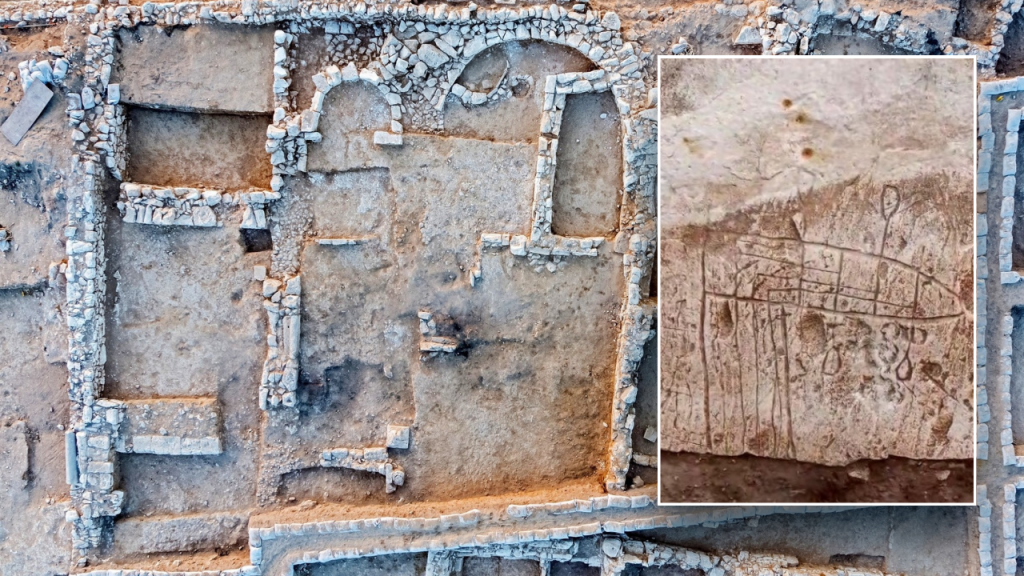Recent archaeological excavations in Israel have uncovered early Christian art dating back around 1,500 years ago. The Israel Antiquities Authority announced the discovery on May 23, revealing that the art was found in an ancient church in Rahat, located in the northern Negev Desert. Historians believe that the wall art, mostly depicting boats, was created by pilgrims who arrived from Gaza during the Byzantine era in the sixth century. The ships depicted in the drawings were likely the vessels that the pilgrims traveled on to reach the Holy Land.
Experts suggest that the art was created between the end of the Byzantine period and the early Islamic period, with ships being symbolic icons in Christianity since ancient times. Archaeologists believe that the ships in the drawings were possibly realistic depictions of the vessels that the pilgrims actually traveled on. The art offers insight into the journeys made by early Christians as they visited sacred sites such as Jerusalem and Bethlehem, stopping in the Negev along the way. The discovery sheds light on the maritime world of sixth-century Christian pilgrims and provides evidence of the ships they used in their travels.
The pilgrims who left their marks on the walls of the church in Rahat were likely passing through on their way to various ancient sites in the region, following Roman roads leading to sacred Christian locations. The art found on the walls of the church may have been a way for the pilgrims to commemorate and document their travels, with ships and crosses being common symbols left by visiting Christian pilgrims as evidence of their pilgrimage. The church in Rahat served as a stopover for these pilgrims as they journeyed towards their final destination in the Holy Land.
One expert, Professor Deborah Cvikel, analyzed the ship drawings found on the church walls and speculated that the artist may have been attempting to create a three-dimensional representation of a ship. The imagery provides insights into the type of vessels that were used by the pilgrims during their travels to the Holy Land. The discovery is considered surprising by the IAA director, Eli Escusido, who highlighted the importance of the find in understanding the lives of sixth-century Christian pilgrims visiting the region. The ship drawings offer a glimpse into the maritime world of that time and provide direct evidence of the vessels used by early Christians during their pilgrimage.
The discovery of early Christian art in Rahat opens a window into the world of Christian pilgrims visiting the Holy Land 1,500 years ago. The artwork found in the ancient church in the Negev Desert reveals the ships that the pilgrims traveled on and provides valuable insights into their journeys and the maritime world of the sixth century. The drawings depict realistic representations of ships that the pilgrims may have sailed on to reach sites like Jerusalem and Bethlehem. The discovery offers a unique glimpse into the experiences of early Christians as they made their way to sacred locations in the Holy Land.
Overall, the finding of early Christian art in Israel sheds light on the lives of sixth-century pilgrims and provides evidence of their travels through the region. The drawings of ships on the church walls in Rahat offer a tangible connection to the past, showing the vessels that early Christians used to journey to the Holy Land. The discovery underscores the significance of maritime travel in the history of Christianity and highlights the importance of pilgrimage in the lives of believers during this period. This unique archaeological find enhances our understanding of early Christian pilgrimages and offers valuable insights into the maritime world of the sixth century.


